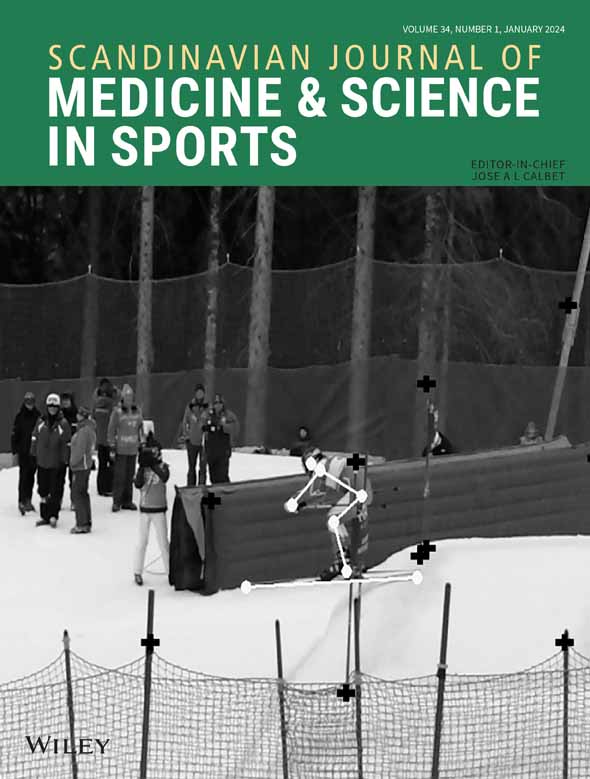Jumping demands during classical ballet class
Phil Price and Joseph W. Shaw should be considered joint senior author.
Abstract
Ballet class represents a considerable portion of professional ballet training, yet the external training load demands associated with class—and particularly the jumping demands—have not been investigated. The purpose of this study was to measure the jumping demands of ballet class by sex and rank. Eleven female and eight male elite professional ballet dancers participated in 109 ballet classes taught by 12 different teachers. Jump counts and jump heights were measured during each class. A Poisson generalized linear mixed effects model was used to examine the differences in jump counts between sexes and ranks. Greater jump counts were observed during class in men than in women (153, 95% confidence intervals [CI] [137, 170] vs. 119, 95% CI [109, 131], p = 0.004) and in junior ranking dancers compared with senior ranking dancers (151, 95% CI [138, 165] vs. 121, 95% CI [108, 135], p = 0.006). Female junior and senior ranking dancers jumped at rates of 9.2 ± 2.6 and 8.6 ± 4.7 jumps·min−1, respectively, while male junior and senior ranking dancers jumped at rates of 9.1 ± 2.6 and 8.7 ± 2.6 jumps·min−1, respectively. Across all classes, 73% of jumps observed were below 50% of maximum double-legged countermovement jump height. Unlike rehearsals and performances, class offers dancers an opportunity to self-regulate load, and as such, are a useful session to manage jump load, and facilitate gradual return-to-dance pathways. Communication between health care and artistic staff is essential to facilitate load management during class.
CONFLICT OF INTEREST STATEMENT
The authors declare no conflict of interest.
Open Research
DATA AVAILABILITY STATEMENT
The data that support the findings of this study are available on request from the corresponding author. The data are not publicly available due to privacy or ethical restrictions.




